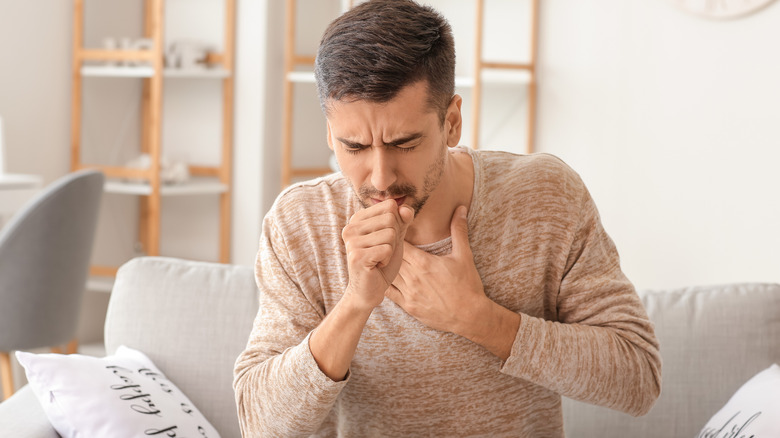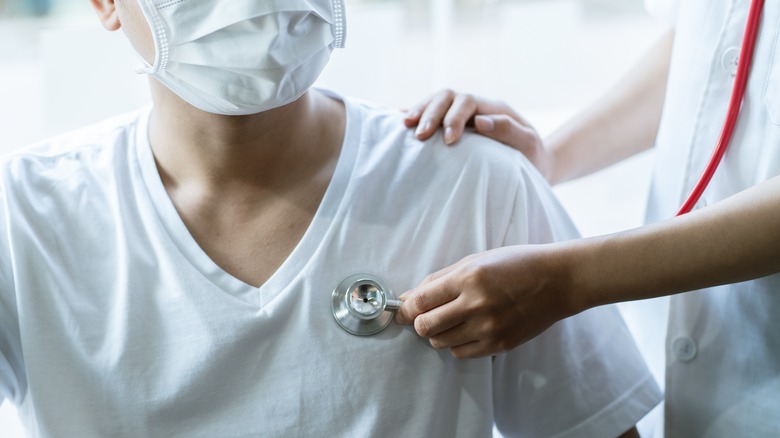New Monkeypox Symptoms You Should Be Aware Of
As the monkeypox virus continues to spread throughout various parts of the world, it's important to be aware of the signs and symptoms associated with the virus. According to the Centers for Disease Control and Prevention (CDC), monkeypox typically presents as a painful rash that looks like pimples, which eventually scab over. Along with a rash, people also may experience flu-like symptoms, such as fever and chills, muscle aches and pains, extreme fatigue, sore throat, coughing, and congestion, per the CDC.
If you have been exposed to monkeypox, symptoms will typically appear within three weeks. The condition usually lasts two-to-four weeks and is incredibly contagious as soon as symptoms start, and until the rash is completely healed (via CDC).
While the typical symptoms of monkeypox resemble the flu along with a blister-like rash, medical experts are alerting the public to new signs of the virus that you should be on the lookout for.
New study highlights additional monkeypox symptoms
A 2022 study published in The BMJ looked at data from 197 male participants who had contracted monkeypox. What they found was that the blister or pimple-like rash that is indicative of the virus was mostly limited to areas around the genitals, anus, and perineum (via MedicalNewsToday). They also found that 36% of the study participants were experiencing rectal pain while pooping and almost 16% were experiencing penile swelling, per Medical News Today.
While there are many possible reasons why these new symptoms are occurring, health experts suggest that it could be due to the fact that the virus has predominately been spread through sexual contact. "It may be that monkeypox has found a new niche, transmission in Europe and North America is now predominately through sexual contact hence the lesions are arising in sites such as the genitals and rectum with resulting difficult clinical presentation such as anorectal pain," Dr. John Thornhill, honorary lecturer at the Faculty of Medicine at Imperial College London, explained to MedicalNewsToday.


